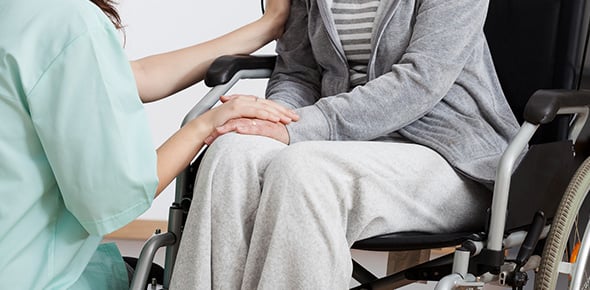Pain is determined by tissue damage alone
Suggests that pain impulses are regulated and blocked by mechanisms...
Match the type of pain on the left with its...
"Chronic pain related to joint and muscle inflammation manifested...
Definition of pain according to the American Pain society:
People with less pain than others from a similar injury have a:
What route is most appropriate for treating rapidly escalating severe...
Pain impulses are regulated or even blocked by mechanisms located...
No longer used because of toxic complications such as seizures
A cutaneous stimulation management device
An opioid antagonist that blocks or reverses all the actions of an...
__________ indicates when the pain started. _____________ is how long...
Difference between a PCA and a PRN medication
__________________ is the most common opioid side effect and the only...
Drug delivery system to control pain via a portable computerized pump...
Risks of clinically significant opioid induced respiratory depression
A group of analgesics that can pose the risk of gastrointestinal (GI)...
Formerly called narcotics, they decrease the perception of pain by...
The standard agent for opioid therapy, although it could compromise...
Morphine-like substances composed of amino acids found in the...
It blocks the pain impulses in the CNS and reduces...
The following are Joint Commission Standards about pain. Select all...
Nurses treating pain have a tendency to
How does the "gate theory" explain the prevention or...
After a total knee replacement, a patient was given an epidural...
Because of its potential for producing seizures, it is no longer the...
The left column enumerates key words for a pain assessment guide....
A pocket sized, battery-operated device that provides a continuous,...
Maximum recommended dosage of acetaminophen
An inflammatory mediator released when cells are damaged...
A patient describes her angina pectoris pain as radiating down her...
When choosing the right route, which of these are appropriate...
Singultus
How do endorphins work to eliminate pain?
Based on the idea that only the patient can feel the pain and only the...
Examples of Opioid. Select all that apply
Examples of over the counter NSAID's. Select all that apply
Behavioral characteristics of Patients in Pain. Select all that apply:
The following are certain considerations needed when providing...
Sleep and Rest. Select all that is applicable and true:
What does it mean to give comfort to a patient? Select all that apply:
Side effects of Opioid therapy. Select all that apply
The danger of morphine and other opioid analgesics is their potential...
Match the physical nonpharmacological intervention on the left with a...
Necessary for body tissue restoration and healthy cardiac functions. A...
Physical illness that can disrupt normal conditions for sleep. Select...
Behavioral signs of pain. Select all that apply
Based on studies of IV and epidural administration routes for opioid,...
The Nature of Pain. Select all that apply:
What is the principle of effective pain management?
A common CNS analgesic often prescribed for pain control
A protein found in foods such as milk, cheese, and meats, that...
"Patient indicates improved pain relief within 1 hour of...
People experience cyclic rhythms as part of their everyday life. What...
Responsible for mental restoration
The following are psychological and cognitive interventions for...
Match the following routes of opioid administration on the left...
Which of the following are objective signs of pain? Select all that...
Which of the following is not a guideline for individualizing pain...
Restores and Rests the body
From what time to what time does everyone have an increased sleep...
Match the following stages of sleep on the left with what happens...
What is the right time and interval for the administration of pain...
Reasons why pain is oftentimes pharmacologically...
Which of the following does NOT form part of the essential message...
The following are physical nonpharmacological interventions for pain....
Physical effects of unrelieved pain. Select all that apply:
A nurse's __________ and ___________ of pain...
Most widely available and frequently used non-opioid analgesic group...
Which of the following are guidelines for individualizing pain...
Which of the following statements regarding the use of patient...
Which of the following are pain rating scales? Select all that apply
Meperidine administration is contraindicated against what? Select...
Match the pain mechanism affected on the right column to each...
Epidural Analgesia. Select all that apply:
Among older adults, which medication are often taken that takes away...
Physiologic signs and symptoms that may arise from sleep deprivation....
Factors affecting sleep. Select all that apply
Selecting the Proper medication when more than one is ordered. Mark...
















